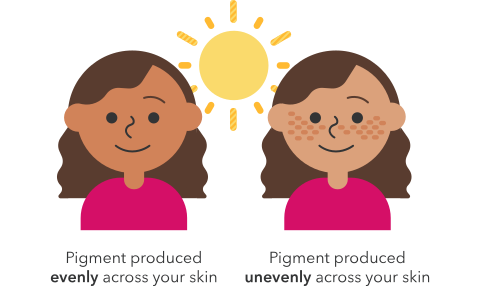How it works
When we’re outside in the sun, specialized skin cells called melanocytes go to work producing pigment to protect our skin. If the pigment is produced evenly across your skin, you end up with a tan. But if pigment is produced in some areas more than others, you get freckles. Scientists aren’t quite sure what causes the uneven distribution of pigment across skin cells.
The genetic link
There are multiple genes that impact how many freckles someone may have. So far, 23andMe researchers have identified 34 genetic markers that affect the likelihood of someone having freckles.

Did you know?
It’s probably no surprise that freckles are more common in people with lighter skin and hair. It turns out these traits have some genetic links in common.
Explore more
Curious what your genetics have to say about your freckles? 23andMe’s Health + Ancestry Service can tell you more. Order a kit to find out whether you’re likely to have many or few freckles based on your genetics.

Health + Ancestry Service
References

Leave a Reply